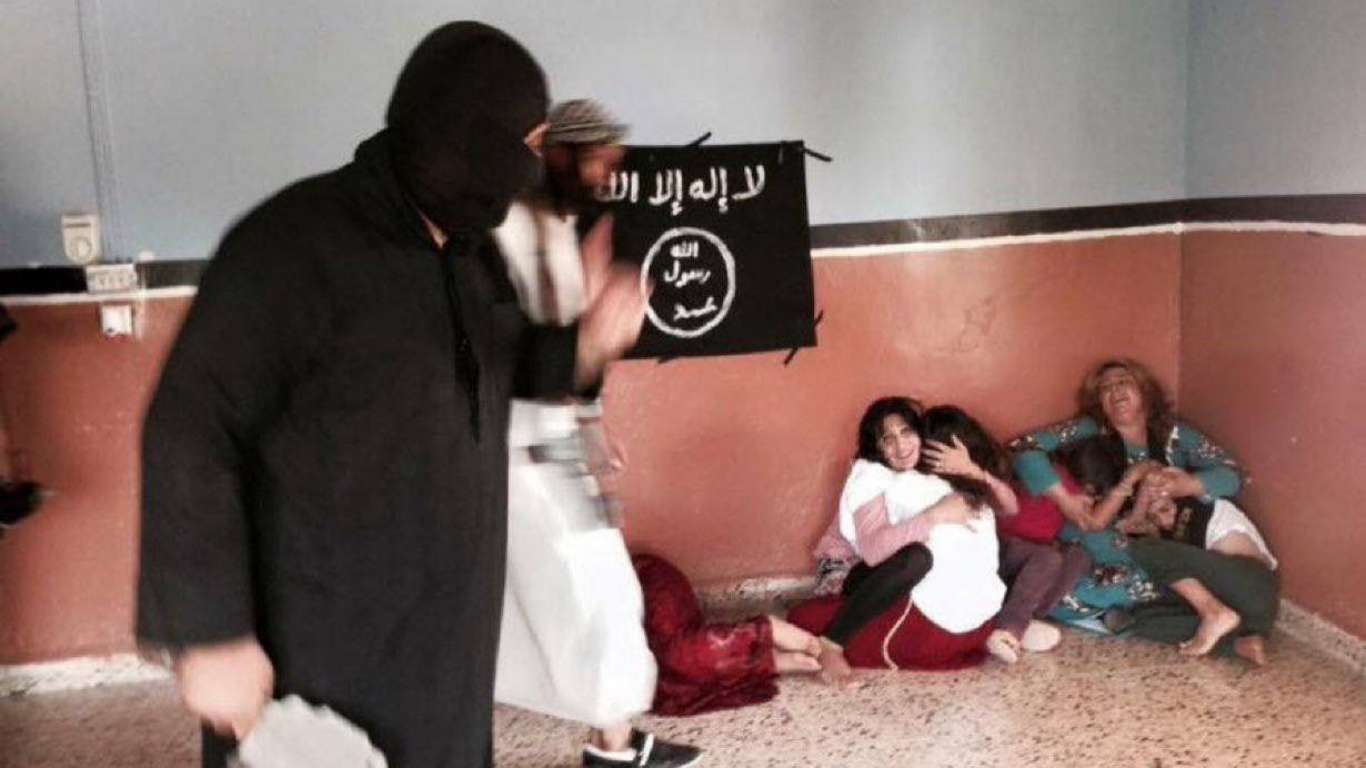
The Yazidis, a small religious minority in northern Iraq, faced unimaginable horrors starting in 2014 when the Islamic State (ISIS) launched a brutal campaign against them. Labeled as “devil worshippers” by their attackers, the Yazidis endured mass killings, sexual slavery, and forced displacement in what many have called a genocide. This article dives into the allegations of the Yazidi genocide, the heart-wrenching stories of brutality, comparisons to the suffering in Gaza, and the striking lack of global protests for the Yazidis’ plight.
Who Are the Yazidis?
The Yazidis are a Kurdish-speaking community, mostly living in northern Iraq’s Sinjar region. They follow Yazidism, a unique monotheistic faith blending elements of Zoroastrianism, Islam, Christianity, and ancient Mesopotamian beliefs. Central to their religion is the Peacock Angel, Melek Taus, often misunderstood by outsiders as a devil figure, which has fueled centuries of persecution. Before 2014, about 500,000 Yazidis lived in Iraq, with smaller groups in Syria, Turkey, and Armenia. Their distinct identity has made them targets for violence, with the 2014 ISIS attacks marking what they call their 74th genocide.
The Yazidis’ history is filled with resilience but also pain. They’ve faced hostility from neighboring groups, including Muslim Kurds and Arabs, who sometimes view their faith as heretical. This long-standing stigma set the stage for the extreme violence unleashed by ISIS, who saw the Yazidis as infidels unworthy of mercy.
The 2014 ISIS Campaign: A Genocide Unfolds
In August 2014, ISIS swept through Sinjar, a Yazidi stronghold, after Kurdish Peshmerga forces withdrew, leaving the community defenseless. The United Nations and other organizations, including the U.S. and Canada, later recognized these atrocities as genocide. ISIS killed around 5,000 Yazidis, often executing men and boys over 12 in mass graves. Women and girls, some as young as nine, faced horrific fates—about 6,800 were kidnapped, with many sold into sexual slavery or forced into marriages with ISIS fighters. Boys were brainwashed into becoming child soldiers.
The brutality was systematic. ISIS marked Yazidi homes, separated families, and issued manuals to justify enslaving women. Their goal was to erase Yazidi identity through murder, forced conversions, and reproductive violence, like raping women to ensure their children would be considered Muslim under Iraq’s laws. Survivors described being sold in markets, tortured, or starved. One Yazidi woman, Nadia Murad, later a Nobel Peace Prize winner, recounted being raped daily for six months while her mother and brothers were killed for refusing to convert. The scale of the violence displaced over 400,000 Yazidis, many fleeing to Mount Sinjar, where hundreds died of thirst and heat.
Stories of Brutality: The Human Cost
Mass Executions and Mass Graves
The stories from Sinjar are gut-wrenching. In villages like Kocho, ISIS rounded up men and boys, forcing them to choose between conversion or death. Those who refused were shot or beheaded, their bodies dumped in mass graves—over 80 have been found in Sinjar. One survivor, Barakat, described fleeing with his family as gunfire echoed, only to learn later that relatives were buried alive. The United Nations reported that 3,100 Yazidis were killed in this manner, some burned alive. These massacres aimed to wipe out the Yazidi male population, leaving families shattered.
Sexual Slavery and Trafficking
Yazidi women and girls faced unimaginable cruelty. ISIS enslaved around 7,000 females, selling them in markets in Syria and Iraq. Girls as young as nine were raped repeatedly, often by multiple men. One survivor, Fawzia Amin Sido, kidnapped at 11, was trafficked to Gaza and held for a decade until her rescue in 2024. Another account tells of 19 girls burned alive in iron cages in Mosul for refusing to become sex slaves. These acts weren’t just violence—they were calculated to destroy Yazidi culture by targeting women, the bearers of future generations.
Child Soldiers and Forced Conversions
Young boys, some as young as seven, were torn from their families and sent to ISIS training camps. There, they were indoctrinated, forced to convert to Islam, and trained for combat or suicide missions. Survivors reported losing their Kurdish dialect and struggling to reintegrate after escaping. The psychological scars run deep, with many boys facing stigma in their communities for their time with ISIS, even though they were victims.
Comparing the Yazidi Genocide to Gaza’s Suffering
Comparing the Yazidi genocide to the situation in Gaza is complex, as both differ in context and intent. The Yazidi genocide was a deliberate, targeted campaign by ISIS to eradicate a religious minority through systematic killings, enslavement, and cultural destruction. The violence was intensely personal—executions, rapes, and forced conversions were designed to erase Yazidi identity. In Gaza, the conflict involves broader political and territorial disputes, primarily between Israel and Hamas, with civilians caught in the crossfire. While Gaza has seen devastating loss of life, infrastructure destruction, and humanitarian crises, the intent is less about annihilating a specific ethnic or religious group and more about geopolitical control.
The Yazidi genocide’s brutality stands out for its genocidal intent, as defined by the UN: acts to destroy a group through killing, preventing births, or transferring children. Stories of mothers forced to eat their babies or elderly women buried alive highlight a level of sadistic cruelty tailored to dehumanize Yazidis. Data from 2014 shows 5,000 Yazidis killed and 71% displaced, compared to Gaza’s 2023-2024 conflict, where thousands died but the population wasn’t systematically enslaved or forcibly converted.
The Yazidi genocide’s targeted nature and lack of global outcry make it a uniquely ignored catastrophe.
The Aftermath: Ongoing Struggles
Ten years later, the Yazidi community is still reeling. Over 150,000 Yazidis live in displacement camps in Iraqi Kurdistan, facing shortages of food, water, and jobs. Sinjar remains in ruins, with 70% of buildings destroyed and no significant reconstruction due to disputes between Iraq’s government and the Kurdish Regional Government. Around 2,700 Yazidi women and children are still missing, presumed dead or held in camps in Syria or Turkey. Survivors suffer from PTSD, depression, and stigma, especially women who bore children from rape and face rejection by their communities.
Efforts like Iraq’s 2021 Yazidi Female Survivors Law offer reparations, but implementation is slow, and many fear applying due to social stigma. The international community has made some progress—Germany convicted an ISIS member for genocide in 2021, a historic first—but justice remains elusive. Most perpetrators remain unpunished, and the Yazidis’ call for accountability often goes unheard.
Why No Protests? The Silence Surrounding Yazidi Suffering
When ISIS ravaged the Yazidis, the world barely reacted. Unlike the protests and global campaigns for Gaza, where marches and social media amplify Palestinian suffering, the Yazidi genocide sparked no major rallies. Posts on X highlight this disparity, noting that while 7,000 Yazidi women were enslaved and 10,000 killed, no crowds took to the streets. Several factors explain this silence. The Yazidis’ small population and remote location made their plight less visible. Their misunderstood religion, branded as “devil worship,” may have dampened sympathy. Geopolitically, Iraq’s chaos in 2014 drew less attention than the Israel-Palestine conflict, which dominates headlines due to its long history and media focus.
The lack of protests doesn’t diminish the Yazidis’ suffering—it underscores how selective outrage can be. While Gaza’s pain is real and deserves attention, the Yazidis’ near-destruction was met with apathy, leaving survivors to rebuild with little global support. Their story demands we reflect on who we choose to champion and why.



